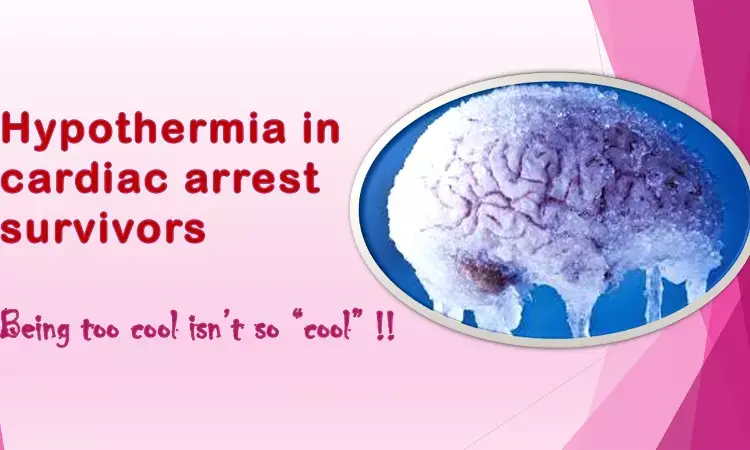- Home
- Medical news & Guidelines
- Anesthesiology
- Cardiology and CTVS
- Critical Care
- Dentistry
- Dermatology
- Diabetes and Endocrinology
- ENT
- Gastroenterology
- Medicine
- Nephrology
- Neurology
- Obstretics-Gynaecology
- Oncology
- Ophthalmology
- Orthopaedics
- Pediatrics-Neonatology
- Psychiatry
- Pulmonology
- Radiology
- Surgery
- Urology
- Laboratory Medicine
- Diet
- Nursing
- Paramedical
- Physiotherapy
- Health news
- Fact Check
- Bone Health Fact Check
- Brain Health Fact Check
- Cancer Related Fact Check
- Child Care Fact Check
- Dental and oral health fact check
- Diabetes and metabolic health fact check
- Diet and Nutrition Fact Check
- Eye and ENT Care Fact Check
- Fitness fact check
- Gut health fact check
- Heart health fact check
- Kidney health fact check
- Medical education fact check
- Men's health fact check
- Respiratory fact check
- Skin and hair care fact check
- Vaccine and Immunization fact check
- Women's health fact check
- AYUSH
- State News
- Andaman and Nicobar Islands
- Andhra Pradesh
- Arunachal Pradesh
- Assam
- Bihar
- Chandigarh
- Chattisgarh
- Dadra and Nagar Haveli
- Daman and Diu
- Delhi
- Goa
- Gujarat
- Haryana
- Himachal Pradesh
- Jammu & Kashmir
- Jharkhand
- Karnataka
- Kerala
- Ladakh
- Lakshadweep
- Madhya Pradesh
- Maharashtra
- Manipur
- Meghalaya
- Mizoram
- Nagaland
- Odisha
- Puducherry
- Punjab
- Rajasthan
- Sikkim
- Tamil Nadu
- Telangana
- Tripura
- Uttar Pradesh
- Uttrakhand
- West Bengal
- Medical Education
- Industry
What brain really wants? Study clears air around ideal hypothermia temperature in cardiac arrest survivors

Presented this month at ACC 2021 conference, results from the randomised CAPITAL-CHILL trial show that cooling patients who are comatose after out-of-hospital cardiac arrest (OHCA) to 31°C rather than 34°C doesn't improve their prognosis over 6 months.
Current guidelines recommend that targeted temperature management (TTM) should fall in the range between 32°C and 36°C. But few studies like Prague OHCA trial have advocated more aggressive temperature lowering to improve OHCA outcomes. CAPITAL-CHILL is the first randomized controlled trial to evaluate the benefits of therapeutic hypothermia with a target temperature below 32°C.
Between 2013 and 2020, the investigator-driven CAPITAL-CHILL trial enrolled 389 patients who were successfully resuscitated but comatose after OHCA. Researchers at the University of Ottawa Heart Institute first stratified these individuals according to whether they had presented with shockable or nonshockable rhythm. They then randomized patients within each cohort to receive endovascular cooling with a target temperature of either 31° or 34°C for 24 hours, after which all were warmed to normal body temperature at a rate of 0.25° per hour. Rewarming took place over 24 hours in the 31°C group and over 12 hours in the 34°C group. Then patients were maintained at 37°C for an additional 24 hours.
Nearly all patients (97%) underwent angiography and almost 60% had PCI, with half receiving stents. Intra-aortic balloon pumps were used in 6% of the 31°C patients and 11% of the 34°C patients. On average, it took 3 hours and 2 hours for each group, respectively, to get to target temperature.
All-cause death and poor neurological outcome (Disability Ratings Scale score > 5) at 6 months, the study's primary endpoint, occurred at similar rates in the 31°C group and the 34°C group (48.4% vs 45.4%), as did the individual components (death 43.5% vs 41.0%; poor neurological outcome 4.9% vs 4.4%). Outcomes didn't differ by sex, age, initial rhythm, STEMI status, and PCI within 12 hours.
There also were no significant differences in the secondary outcomes of pneumonia, renal replacement therapy, seizure, and stroke. Bleeding and thrombosis rates, too, were equal. Median length of stay in the cardiac intensive care unit was longer for the 31°C group than for the 34°C group (10 vs 7 days; P = 0.004), although the overall stay in the cardiac center didn't differ.
It is notable that compared with the 34°C target, 31°C carries numerically higher rates of stroke, seizure, TIMI major bleeding an pneumonia.
To summarize , the results of this trial indicate that moderate hypothermia (target temperature 31°C) is not superior to mild hypothermia (target temperature 34°C) in improving mortality or neurological outcomes at 6 months among comatose patients with OOHCA. The vast majority of patients in this trial had an initial shockable rhythm. More intense hypothermia resulted in a longer length of stay in the ICU and numerically higher strokes, bleeding and seizures. thus physicians should refrain from instilling too aggressive temperature lowering therapy in the hope of improving clinical outcomes in such settings.
Source: Le May MR. Therapeutic hypothermia following out-of-hospital cardiac arrest: a randomized trial comparing mild and moderate therapeutic hypothermia. Presented at: ACC 2021.
MBBS, MD , DM Cardiology
Dr Abhimanyu Uppal completed his M. B. B. S and M. D. in internal medicine from the SMS Medical College in Jaipur. He got selected for D. M. Cardiology course in the prestigious G. B. Pant Institute, New Delhi in 2017. After completing his D. M. Degree he continues to work as Post DM senior resident in G. B. pant hospital. He is actively involved in various research activities of the department and has assisted and performed a multitude of cardiac procedures under the guidance of esteemed faculty of this Institute. He can be contacted at editorial@medicaldialogues.in.
Dr Kamal Kant Kohli-MBBS, DTCD- a chest specialist with more than 30 years of practice and a flair for writing clinical articles, Dr Kamal Kant Kohli joined Medical Dialogues as a Chief Editor of Medical News. Besides writing articles, as an editor, he proofreads and verifies all the medical content published on Medical Dialogues including those coming from journals, studies,medical conferences,guidelines etc. Email: drkohli@medicaldialogues.in. Contact no. 011-43720751


